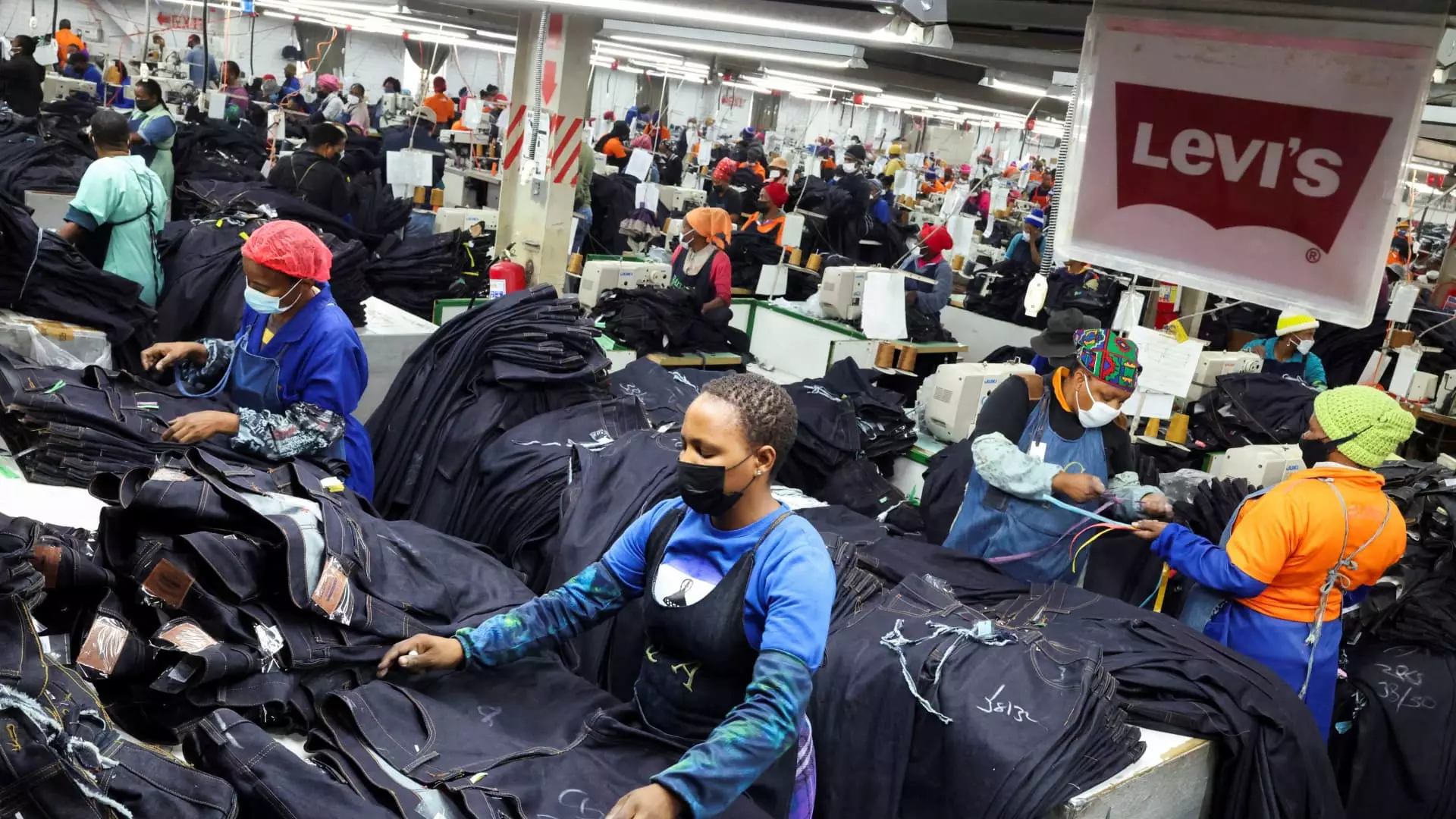Levi Strauss & Co. demonstrates a remarkable ability to adapt and project confidence, despite facing unpredictable trade policies that threaten its global footprint. While many corporations tremble at the mere hint of tariffs, Levi’s management chooses to focus on what they can control. The company’s decision to raise its full-year guidance signals a strategic optimism that might seem naive given the current tumult of U.S.-China relations and reciprocal tariffs in Southeast Asia. However, this move underscores a core belief: resilience and innovation can withstand even the most unpredictable geopolitical storms. Levi’s willingness to absorb costs, rather than simply pass them on to consumers, reveals an underlying confidence in their brand strength and operational flexibility.
Yet, this confidence is arguably built on fragile assumptions. The firm’s optimistic stance hinges on the presumption that tariffs will, at worst, minimally impact margins. That’s an assumption that borders on wishful thinking in an era where trade policies are anything but stable. The current administration’s trade maneuvers are fluid—tariffs can be ramped up or eased almost overnight, and this instability could easily undo the “small impact” Levi’s anticipates. The company’s strategy appears to be a balancing act: assert internal resilience while grappling with external uncertainties that threaten to upend their supply chain and cost structure at any moment.
Global Supply Chains: A Fragile Backbone
Levi’s manufacturing backbone is globally dispersed, with significant portions originating from Southeast Asia—countries like Bangladesh, Indonesia, and Pakistan. This reliance on international trade routes makes Levi’s particularly vulnerable to policy shifts. Recent threats from the Trump administration to impose tariffs of over 30% on imports from Bangladesh and Indonesia exemplify how fragile this supply chain is. Although Levi’s attempts to absorb some costs might shield them temporarily, the long-term sustainability of such resistance is questionable. Absorbing costs at the corporate level is a short-term fix; ongoing trade threats threaten to escalate costs and disrupt logistics, especially if negotiations sour.
Moreover, Levi’s current disclosures leave many questions unanswered. The precise origins of their products and the projected impact of tariffs on different regions remain ambiguous. This opacity is concerning, as it signals a broader risk—a business that’s not fully transparent about its vulnerabilities is one that might find itself unprepared when disruptions hit harder than expected. Relying on the assumption that tariffs won’t significantly impact supply costs is a gamble, particularly given the volatile international trade landscape.
Strategic Adaptations and Market Positioning
Levi’s response to these external shocks demonstrates a strategic shift that might be viewed as both prudent and risky. Their focus on strengthening direct-to-consumer channels—via e-commerce and flagship stores—aims to improve margins and gain better control over brand presentation. This shift is a savvy move in the context of a potential trade war, as reducing reliance on wholesale partners diminishes exposure to disruption and margin compression.
CEO Michelle Gass’s leadership prioritizes innovation and premium pricing, as evidenced by her efforts to cut promotional activity and introduce higher-margin product lines. The record gross margin of 62.6% signals success in these initiatives, yet it also raises questions about the sustainability of such margins if trade tensions escalate further. Will consumers continue to pay a premium in a climate of economic uncertainty? The answer depends heavily on the resilience and loyalty fostered by Levi’s branding and marketing strategies.
The company’s attempt to diversify its offerings—venturing into women’s apparel with promising growth figures—underscores a broader industry trend: shifting away from traditional core products to more inclusive, fashionable lines that appeal to a wider demographic. Such innovation not only increases revenue streams but also helps position Levi’s as a dynamic, forward-thinking brand capable of navigating turbulent waters.
The Psychology of Consumer Loyalty in Turbulent Times
In challenging market conditions, Levi’s focus on brand relevance and consumer loyalty becomes even more critical. Initiatives like the Beyoncé partnership and limited-edition drops serve as strategic tools to keep the brand top of mind amid economic uncertainty. These collaborations are more than marketing gimmicks—they are assertions of cultural relevance, reinforcing Levi’s role not just as a clothing retailer but as a cultural icon.
This approach hints at an understanding that consumer loyalty in tough times is rooted in emotional engagement. Levi’s recognizance that their traditional denim product has to evolve into a lifestyle statement, appealing beyond just male customers, is a savvy move—especially at a time when economic tensions threaten to suppress consumer spending. The increased sales of women’s apparel and tops demonstrate the company’s efforts to diversify and adapt, making their brand more resilient in a rapidly changing climate.
Nevertheless, the core challenge remains: Can Levi’s sustain this optimism without falling victim to external shocks? The company’s increased guidance on revenue growth and pricing strategy suggests confidence, yet their relatively muted profit margin expectations reveal a cautious acknowledgment of risks ahead. It’s a delicate dance—betting on continued consumer loyalty and market relevance while deftly navigating a storm of tariffs, geopolitical tensions, and fluctuating demand.
—
In navigating these complexities, Levi Strauss’s current approach exemplifies a blend of strategic boldness and cautious risk management. Their future hinges on their ability to remain flexible amidst external chaos and to sustain their cultural relevance through innovation and deep consumer engagement. In an era where global trade is unpredictable and protectionism threatens to redefine supply chains, Levi’s stands at a crossroad—risk losing ground if tariffs escalate or capitalizing on its brand strength if it continues to innovate and adapt. The real question is whether they can sustain the delicate balance, or whether their resilience is merely an illusion masking underlying vulnerabilities.

